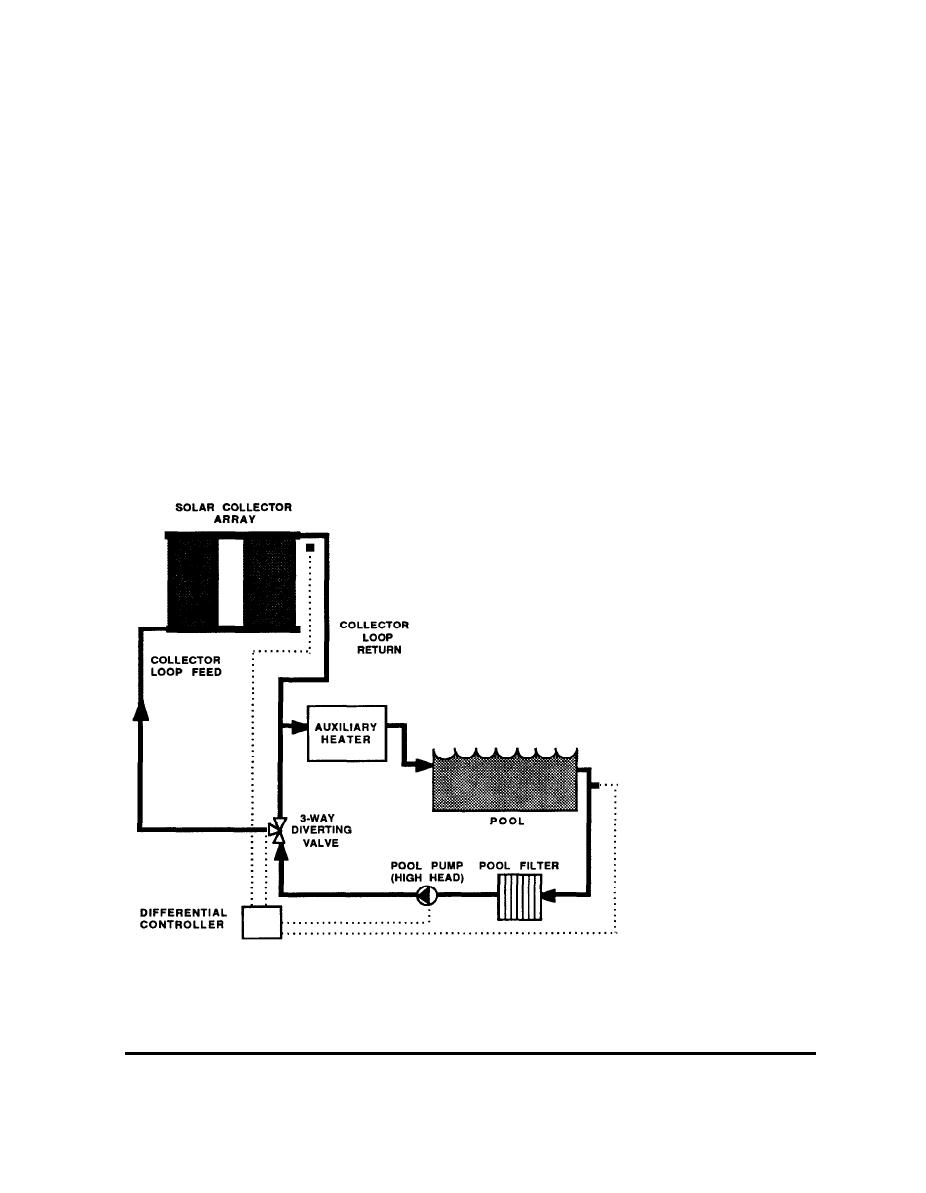

Custom Search
|
|

|
||
 This allows the solar collectors to be very simple. Plastic, rubber or metal absorbers
are secured to a roof or rack. No insulation, frame or glazing is necessary.
Pool water flows either directly through the collectors or through a heat exchanger in
the solar loop. After solar heat is added, an auxiliary heater may be used to further
boost the water temperature.
The pool filter pump is normally set to run during the daylight hours. When the solar
control decides the collectors are warmer than the pool water, a valve system
diverts pool water through the collectors.
Indoor pools used throughout the entire year typically use an indirect system. The
collectors are standard glazed flat-plate units, and usually a non-freezing fluid is
used in the collector loop. A heat exchanger, with stainless steel or copper-nickel
passages for the pool water, transfers the solar heat into the pool.
FIGURE 2-9
A Pool Heating
System
OPERATION
2.1 BASIC SYSTEM CONFIGURATION
13
|
 |
|
 |
||